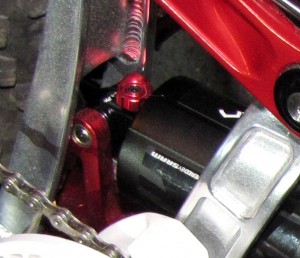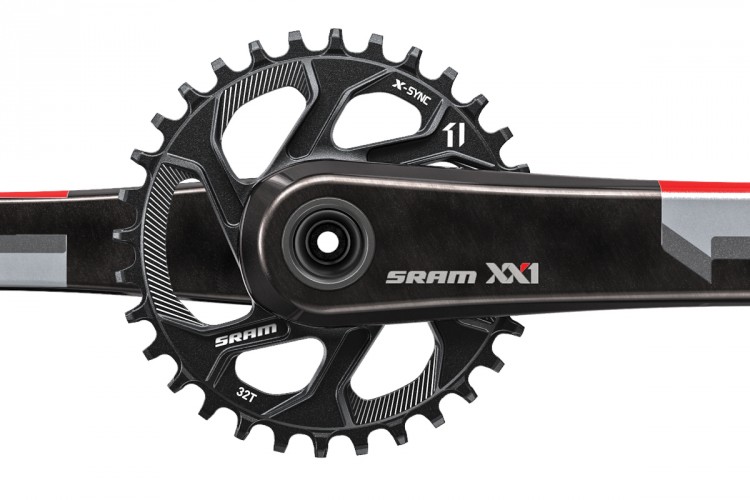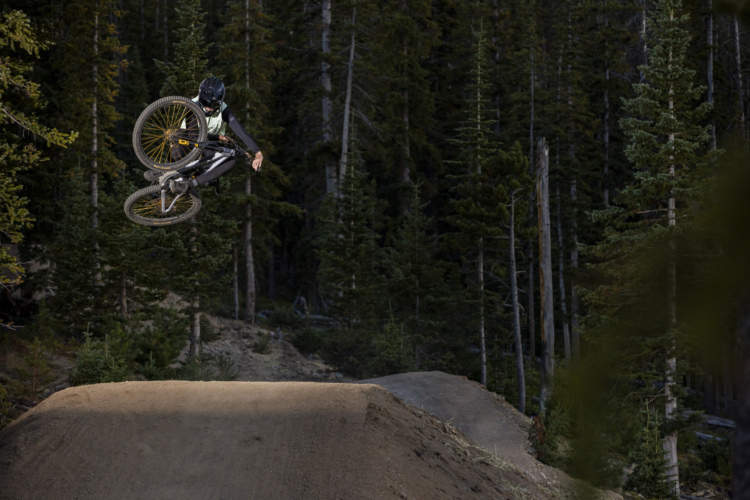When it comes to gravity riders, depending on who you talk to you get two basic types: those who care about the weight of their rig and those who pretend not to care about weight. But let’s face it, weight kills performance: both on the rider and on the ride. The more weight the bike has to carry, the slower a rider can change direction and speed, which limits their performance wailing down slopes at speeds that would make Mario Andretti messa his shortsa.
Clearly Rockshox is familiar with speed (not the messing shorts bit) and based on their commitment to top riders on the World Cup circuit, they have come up with inventive ways to save on weight. And I’m not talking about small savings here – I’m talking about a good 400 grams in savings on a single component which is huge.
The Technology
Witness the Vivid Air RC2 mountain bike shock. Essentially RockShox found a way to convert a coil shock into an air shock, which wasn’t easy by any means. Think of it: trying to get an air spring to behave like a steel spring – seems like a daunting challenge. Taking a look at the exploded view below, you can see for yourself that it really isn’t very simple at all. But then again not everything can be.
 While the Vivid Air may look a bit complex with its dual air chambers, it’s basically very similar to the original Vivid coil shock. A modified shock body (J) has been machined smooth and now serves as part of the air spring. Parts (A)-(E) as well as (N) belong to the dual chamber air spring. Everything else is pretty much the same as the Vivid coil. All of this combines to achieve a coil spring-like feel – minus the heavy coil. Comparing spring rates between the Vivid Air and the Vivid coil shows they are nearly the same with the exception of the last few millimeters in travel where the Vivid coil ramps up a touch faster than the Vivid Air.
While the Vivid Air may look a bit complex with its dual air chambers, it’s basically very similar to the original Vivid coil shock. A modified shock body (J) has been machined smooth and now serves as part of the air spring. Parts (A)-(E) as well as (N) belong to the dual chamber air spring. Everything else is pretty much the same as the Vivid coil. All of this combines to achieve a coil spring-like feel – minus the heavy coil. Comparing spring rates between the Vivid Air and the Vivid coil shows they are nearly the same with the exception of the last few millimeters in travel where the Vivid coil ramps up a touch faster than the Vivid Air.
What you don’t see in the new Vivid Air is the hot rod compensation pellet which is built into the bypass rod. When heated (during extended runs), the pellet expands and adds additional rebound force. Some of you might scoff and say plastic isn’t durable enough but rest assured, the hot rod is a well engineered addition to the rebound rod.
Adjustments
The Vivid R2C features a host of adjustments. The most obvious one is the air spring pressure which means no more pesky coil spring swaps. There’s also the external low speed compression adjustment plus beginning and end stroke adjustments. These four dials give you pretty much everything you need to get your rig wailing down them slopes pinned and sticking to the trail. What you don’t get (which you’ll need to purchase separately) are the frame adapters. I opted for the three piece solution rather than the two piece aluminum set; it’s a bit more costly but a longer-lasting solution for your bike.
Installation and Set-up
Looking at the Vivid Air you might assume it’s larger than a coil shock but that’s not really the case. The overall diameter is only a few millimeters larger than a coil shock but since you can’t see through the Vivid Air that makes it look bigger. Installation works the same as it does for any other unit out on the market today – just make sure you install the shock so that you can get to all the adjustments and make sure the reservoir doesn’t strike anything when your suspension moves. Install the shock with no air and cycle the suspension to make sure you’re clear – easy peasy.
Setting up the Vivid Air is pretty much the same process as the Vivid coil except that you’re going to add or remove air from the single valve on the air can (it sets up the negative spring automatically via internal compensation ports). In my case I needed 30% sag on my Banshee Legend II, so knowing the stroke of the shock (76mm) and multiplying it by 0.30 I get the sag measurement (76mm x 0.30= 23mm). With that I just added air into the shock until I reached my measurement. Unfortunately the Vivid Air doesn’t have the sag gradients that grace many other Rockshox products; instead the gradients are printed on the reservoir sticker
With the sag set, it was time to head out to the slopes to fully set up the shock. Using my experience with the Vivid coil shock, I started off with the compression settings and quickly found that the Legend got a lot of traction with 4 clicks on the compression dial. The terrain that I was riding featured a mix of rocky, rooted terrain with hard patches and soft stuff in and around. With this set up I found I had good control over the wheel on the rough stuff while still tracking the terrain nicely. On landing big jumps, the compression setting did well controlling the bike without too much fuss.
After the compression was set I started looking at the rebound settings. I tuned the beginning stroke rebound (which plays a major roll on rockgardens) so that I didn’t get a bucking sensation out back when the wheel tried to return after those hits. The sweet spot for me was right about 9 clicks.
Lastly I set the end stroke rebound (for bigger hits) which was by far the most fun to set up. Essentially I was sessioning a few jumps and dialing the shock until I ended up at 5 clicks. I found the Banshee and the Vivid worked great together, mostly due to the initial rear wheel travel (designed into the geometry) which gave great control over the bike when hitting harder, squared-edged stuff. This also allowed me to dial back on the adjustments, resulting in more wheel sensitivity without sacrificing control.
Overall the Vivid Air feels great and performs like a champ. As a result I have a bike that is a pound and a half lighter, I don’t have to play with springs, and I have good control over my bike with a coil-like feeling. I’m definitely looking forward to playing around with the Vivid Air to see how much more I can get out of it in the future. The only drawback I can see is that the price for the Vivid Air is a few dollars more than the coil version. At about $630 MSRP it’s not cheap but to get a coil shock down to race weight the only other option is to upgrade to a titanium spring (which adds another $200 at least). To me that makes the Vivid Air a great value.
I would like to thank Tyler Morland and the good folks at Rockshox for setting up the Vivid Air for a review.


























0 Comments